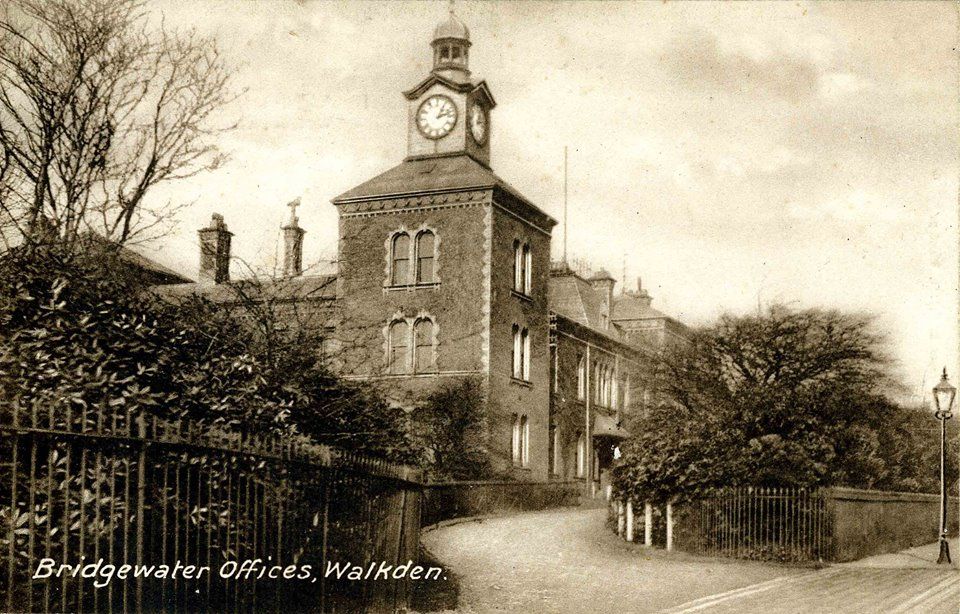Manchester Collieries was a coal mining company with headquarters in Walkden, Lancashire, formed in 1929 by the merger of a group of independent companies operating on the Manchester CoalfieldPart of the Lancashire Coalfield. Some easily accessible seams were worked on a small scale from the Middle Ages, and extensively from the beginning of the Industrial Revolution until the last quarter of the 20th century.. The Mining Industry Act of 1926 attempted to stem the post-war decline in coal mining and encourage independent companies to merge in order to modernise and better survive the economic conditions of the day. Robert Burrows of the Atherton company Fletcher, BurrowsOwner of collieries and cotton mills in Atherton in North West England. proposed a merger of several independent companies operating to the west of Manchester. The merger was agreed and took place in March 1929.[1]
Constituent companies
The constituent companies of Manchester Collieries in 1929 were Fletcher, Burrows and CompanyOwner of collieries and cotton mills in Atherton in North West England. who owned the Howe Bridge, Gibfield and ChantersFormer colliery in Hindsford, Atherton where coal was mined from 1854 until 1966. collieries in Atherton, Andrew Knowles & SonsAndrew Knowles and Sons was a coal mining company that operated on the Manchester Coalfield in and around Clifton, in the historic county of Lancashire, England., the Clifton & Kersley Coal Company, John Speakman & Sons, owners of Bedford CollieryColliery in Leigh sunk by John Speakman at Wood End Farm in the northeast part of Bedford in 1875 in Leigh, Bridgewater CollieriesCoal mining company on the Lancashire Coalfield with headquarters in Walkden near Manchester. who operated pits in Little Hulton, Walkden and Mosley Common and the Astley and Tyldesley CollieriesColliery company formed in 1900, became part of Manchester Collieries in 1929, and some of its collieries were nationalised in 1947. Company, which had pits in Astley and Tyldesley.[2]
Not all companies in the area joined the new company. The Tyldesley Coal CompanyCoal company was formed in 1870 in Tyldesley on the Manchester Coalfield, in the historic county of Lancashire, England. remained independent until nationalisation in 1947, but others were acquired in the 1930s after the government introduced quotas in the Coal Mines Act 1930. Ramsden’s ShakerlRamsden’s Shakerley Collieries was a coal mining company operating from the mid-19th century in Shakerley, Tyldesley in Lancashire, England. ey CRamsden’s Shakerley Collieries was a coal mining company operating from the mid-19th century in Shakerley, Tyldesley in Lancashire, England. ollieriesRamsden’s Shakerley Collieries was a coal mining company operating from the mid-19th century in Shakerley, Tyldesley in Lancashire, England. was taken over in 1935; its Wellington Pit closed the same year and the Nelson three years later. Bradford CollieryBradford Colliery was a coal mine in Bradford, Manchester, England. , in Manchester, owned by a subsidiary of Fine Cotton Spinners, was acquired in 1935. The West Leigh Colliery Company and the Coppull Coal Company were bought before 1939.[3]
Before 1929 most coal was cut by hewers, men using picks and shovels, but Manchester Collieries began a programme of mechanisation increasing its production of machine-cut coal from 17% to 98% in 16 years. The movement of coal underground was also mechanised, and pit ponies were no longer used for underground haulage after 1932.[4]
Mining was a dangerous industry, but Manchester Collieries aimed to make the job as safe as possible, and training was a major priority. Some entrants attended local technical colleges and, after 1942, some were sent to university. The company was considered to be a generous employer; workers at its pits were on average 1s 6d per shift better off than miners working for other employers, and it built pithead baths and canteens at its pits.[4]
Central Railways
The collieries were linked by an extensive system of mineral lines linked to workshops at Walkden Yard and were also linked to mainline railways at Ellenbrook and Sandersons Sidings on the Tyldesley LooplineRailway line built in 1864 to connect local collieries to the Liverpool–Manchester main line., at Astley Green sidings on the Liverpool and Manchester Railway, at Walkden Low Level on the line to Bolton, at Walkden High Level on the Manchester and Wigan Railway and at Linnyshaw Moss on the Manchester to Bolton Line. There were canal tips at Boothstown and Astley on the Bridgewater Canal.[5]
Nationalisation
At nationalisation in 1947 Manchester Collieries employed 14,868 workers on the Lancashire Coalfield. Some of the surface workers were women, known as pit brow lassesFemale surface labourers at British collieries. They worked at the coal screens on the pit brow (pit bank) at the shaft top until the 1960s. Their job was to pick stones and sort the coal after it was hauled to the surface. , who sorted coal on the screens at the pit head.[6] As coal reserves became exhausted, the older collieries closed.[4]

